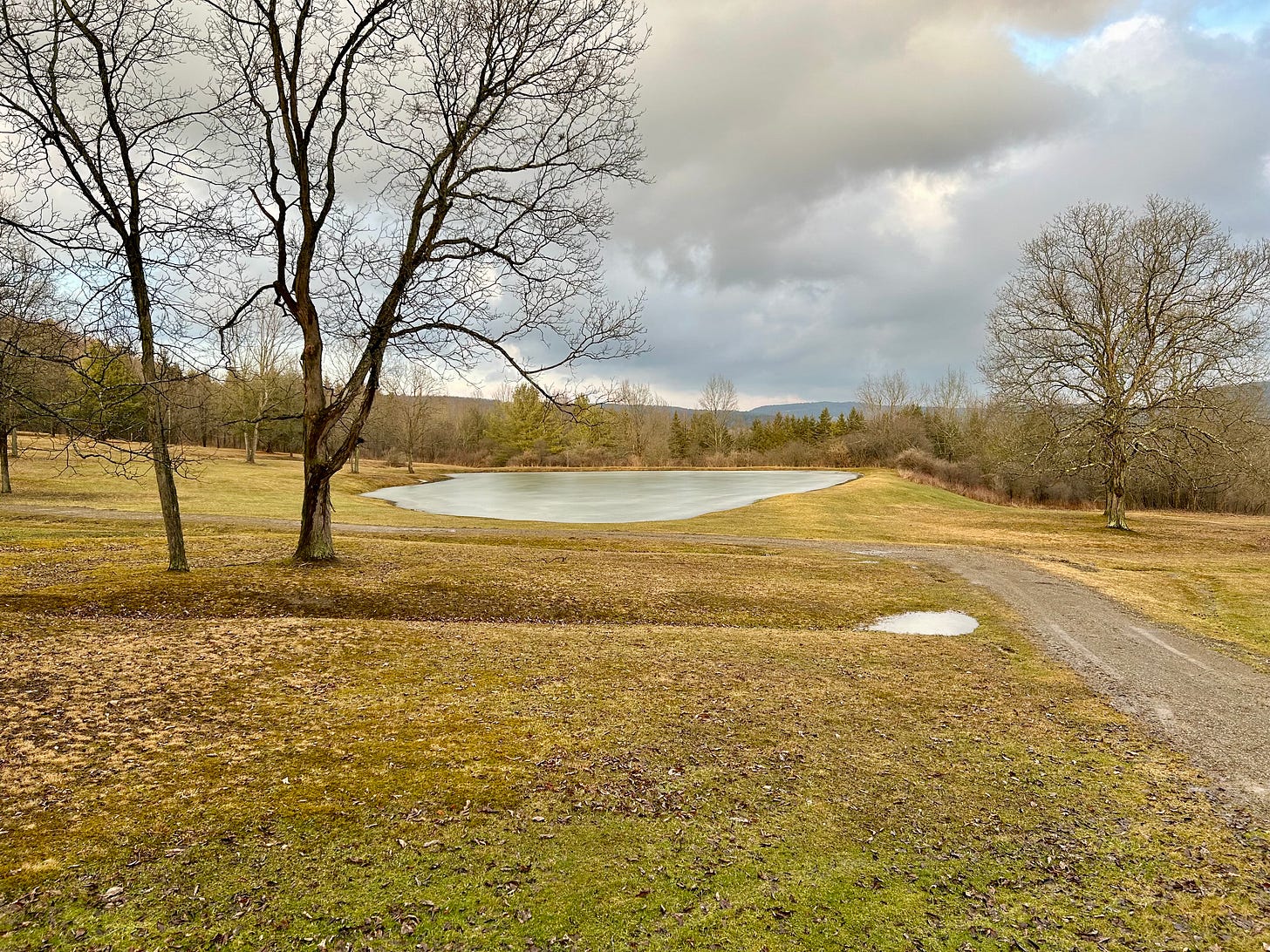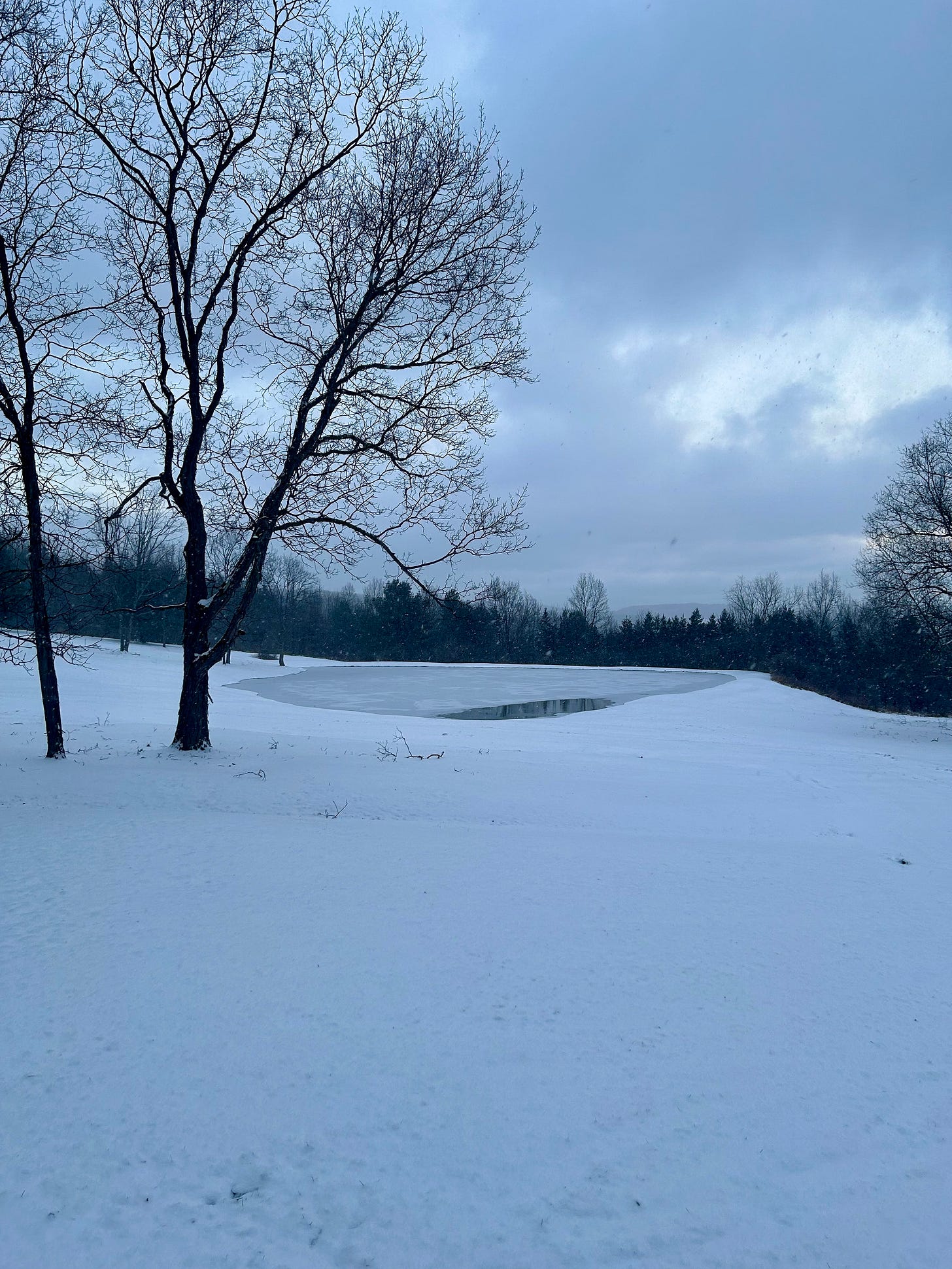Growing Our Fields
Sometimes Meidō Barbara Anderson Roshi, my Guiding Teacher, helps me identify the “issue at hand” during our one-on-one conversations about practice and study. What are the bodily sensations that accompany your repeated engagement with this experience or story? What is it that you are trying to say, in one or two sentences? What are we even doing here? These questions and others of a similar spirit are a reminder “to express what is most essential,” an imperative that loosely translates the Japanese word genjōkōan. Taigen Dan Leighton Roshi explains:
[…] our practice in our sitting or when we get up from our formal sitting is to fully manifest, express, or share what is essential in the situation in front of us, and to do this within ourselves, together in a sangha, and for our world as a whole.
For me these days, what is most essential or the enduring issue at hand is relationships—and in several ways. How do I co-create and sustain healthy, nourishing, and supportive relationships with my Guiding Teacher, my partner, the sangha that practices at O-An Zendo, and my friends and family? How do I remain engaged with my challenging relationships? With the person who is constantly in performance, not so much for others and more for themselves, and independent of the circumstances? With the person who is consistently needy, acutely aware of the feeling that something is missing, who grasps at anyone or anything in search of some relief?
None of these relationships is exactly the same as any other. Yet all of them are included within my general orientation to bring about less suffering and more safety in the world. How do I continue moving in that direction, while at the same time remaining flexible precisely because no one of my relationships is exactly the same as any other and because I cannot foresee all that will come my way?
These are common and important questions. Spending time with them (or not, for that matter) shapes a great deal of our lives, perhaps the whole of them. And less significant are answers to these questions; more significant is continued exploration with them. So Rilke writes in his fourth letter to Kappus:
I would like to beg of you, dear friend, as well as I can, to have patience with everything that remains unsolved in your heart. Try to love the questions themselves, like locked rooms and like books written in a foreign language. Do not now look for the answers. They cannot now be given to you because you could not live them. It is a question of experiencing everything. At present you need to live the question. Perhaps you will gradually, without even noticing it, find yourself experiencing the answer, some distant day. [… for now] accept that which comes to you with deep trust, and as long as it comes from your own will, from your own inner need, accept it, and do not hate anything.
It requires not just patience but great courage to live and love our questions. There needs be a certain fearlessness to stay open when and wherever they arise, and to stay with the subsequent exploration wherever it goes. That is how I am expressing what is most essential in my life these days. I am choosing to remain available, whether I am standing, sitting, walking, or lying down.
Still, sometimes there arises a desire for more than the seemingly simple—and by no means easy—adage to “stay put, stay open.” I had what I consider a small insight while on retreat last week. I want to present it in outline here.
There is a lot of discussion about “boundaries” these days. We talk about how and when to set boundaries. The focus often seems to be with others, though sometimes with ourselves too. We explore the differences between “hard” and “soft” boundaries, along with questions concerning which is appropriate as a response to some behavior, event, or situation. And it seems that there is a great deal of energy devoted to discerning the most skillful ways of communicating our decision to set one or more boundaries with someone with whom we are in relationship. This last is a topic that, it often feels to me, has an uncountable number of relevant considerations. For there are as many kinds of relationships as there are things with which we are in relationship—and perhaps even more than that.
For all the benefits that boundaries and discussions about boundaries bring, there is at the same time a feeling that something is missing. What is missing? What is this feeling?
The Vimalakīrti Sutra introduces us to the idea of a “buddha field.” What is a buddha field? It is a meeting place, a field for spiritual practice that continually co-arises and departs as we move through the world, into and out of relationship with others. With every new encounter, a fresh field co-arises, prime for exploration and cultivation of teachings, practices, and methods that assist us in showing up skillfully, wholesomely for others. Buddha fields serve both as a training ground and the place in which the main event happens—and at the same time.
Dale Wright, in his commentary on the Vimalakīrti Sutra, writes:
The bodhisattva’s “buddha-field” is a sense of community and a sphere of influence, small or large, that extends as far as a person’s wisdom and compassion make possible. […] it is a field of aspiration, an arena of transformative practice for those intent upon learning how to live differently.
The field extends only “as far as a person’s wisdom and compassion make possible.” How, then, can we grow our buddha fields?
Vimalakīrti identifies two groups of practices throughout the sutra. The first is the Six Pāramitās (Perfections of Character): Generosity, Ethical Discipline, Patience, Joyful Effort, Meditation, and Wisdom. The second is the Four Brahmavihārās (Abodes of Brahma): Love, Compassion, Sympathetic Joy, and Equanimity. Both groups are not presented as just a bunch of theory. We as readers witness over and over Vimalakīrti’s embodiment of these character traits and qualities in relationship with others through his use of upāya (skill in liberative technique). We see him able to meet all possible persons in all possible circumstances. The image is lofty, yet not so much that it diminishes its inspirational quality. By the sutra’s end, we are left with the impression that the field in which Vimalakīrti meets others is just as vast and splendid as the great canopy created by the Buddha to cover the assembly at the sutra’s beginning—and born from just as noble a desire: to offer comfort and relief to all beings.
What I want to suggest is that, in addition to setting boundaries, it is at least as important to grow our fields. Within an expansive field, there is the possibility of each thing with which we are in relationship to settle into its appropriate place. There is the possibility of engagement with others that is not mediated by a metaphorical wall, but supported through underlying currents of compassion, generosity, and patience. We are able to maintain distance where necessary, though not at the expense of connection. And that is the most important thing. For we are and cannot ever be separate, no matter how much we might try.
Robert Frost’s Mending Wall opens with:
Something there is that doesn’t love a wall,
That sends the frozen-ground-swell under it,
And spills the upper boulders in the sun;
And makes gaps even two can pass abreast.That same something calls us to grow our fields too. Fields where we are able to “stay put, stay open,” and because of which such fields are an expression of “maha-yana”—the great vehicle on which all of us are traveling through life together.
The quotation from Taigen Dan Leighton Roshi is from his book “Zen Questions: Zazen, Dogen, and the Spirit of Creative Inquiry.”
The quotation from Rilke’s fourth letter is from “Letters to a Young Poet,” translated by Joan M. Burnham.
The quotation from Dale Wright is from his book “Living Skillfully: Buddhist Philosophy of Life from the Vimalakīrti Sutra.”
The excerpt from Robert Frost’s “Mending Wall” is from the collection “North of Boston.”




So beautiful, Taishin Michael. And seeing it - the field and importance of tending to our shared fields rather than focusing solely on "boundaries" - I can't unsee it. Thank you.